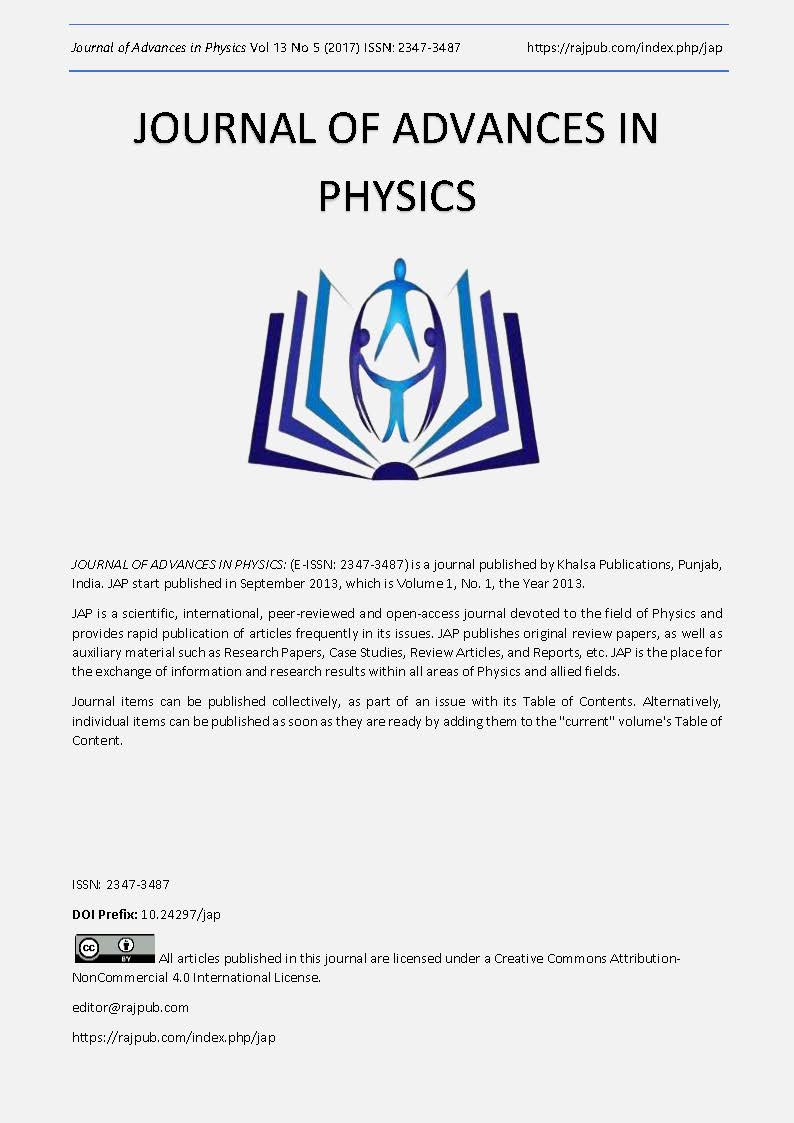Chromium fluoride-containing bioactive glasses: Structure and properties
DOI:
https://doi.org/10.24297/jap.v13i5.6042Abstract
Bioglasses in the system 24.5Na2O.24.5CaO.6P2O5.xCrF2.(45-x)SiO2 have been studied in the composition region of x= 0-10 mol%. CrF2. Glass of molar ratio (Ca+Na)/SiO2 ~1.1 is the base material for the glasses containing different CrF2 concentrations. X-ray diffraction (XRD), differential scanning calorimetriy (DSC), scanning electron microscopy (SEM), energy dispersive spectroscopy (EDS) and Vicher hardness (Hv) measurements have been carried out. Crystalline feature of the glasses is followed up by XRD spectroscopy. It is found that crystallinity was enhanced via CrF2 addition. More enhancement was confirmed via thermal heat treatment process. Increasing CrF2 and sintering temperature will induce new ordered phases which will be distributed in the main glassy phase. Well formed flouroapatite (Ca5(PO4)3F and wollastonite Ca3Cr2(SiO4)3 phases containing fluorine and chromium ions are evidenced in CrF2 containing glasses. Increasing glass transition temperature Tg and hardness number Hv upon increasing CrF2 concentration was discussed on bases of formation of additional bonds by the effect of CrF2 molecules. The measured temperature window between Tc and Tg was found to have a great influence in material structure. Wide window is a feature of amorphous glass which free from CrF2. The window scale is found to quickly decrease with increasing CrF2, since crystalline phases are already formed in glasses containing CrF2. Formation of crystalline intermediate phases with more shielded silicate and phosphate structural is considered as the main reason for increasing Tg and (Hv) of the glasses. EDS as well as XRD analyzed spectra confirm that crystalline wollastonite of calcium inosilicate mineral (CaSiO3) phase is well formed. The wollastonite species is evidenced to contain small amounts of chromium and fluorine ions which are substituting for calcium cations. Wollastonite phases with Cr/Si=1 is the most dominant type. This ratio is a characteristic feature of crystalline CaSiO3 species. Small concentration from fluorine ions are involved in apatite phases. Presence of both crystalline apatite and wollastonite in the sample matrix promotes its biocompatibility, particularly orthopedic bioactivity. As a consequence, some of investigated glasses are recommended to be applicable in dental field of applications. This depends on its own crystallinity, hardness, its apatite and wollastonite concentration as biocompatible phases in the crystallized glass
Downloads
Downloads
Published
How to Cite
Issue
Section
License
 All articles published in Journal of Advances in Linguistics are licensed under a Creative Commons Attribution 4.0 International License.
All articles published in Journal of Advances in Linguistics are licensed under a Creative Commons Attribution 4.0 International License.




